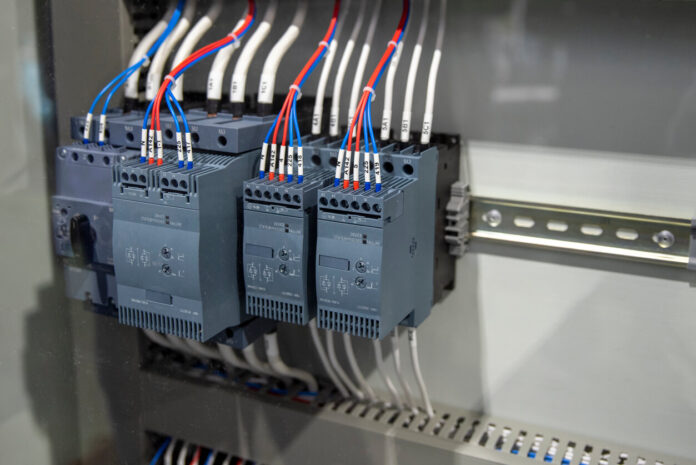Electrical interlocking is a crucial safety and control mechanism widely employed in industrial and commercial systems to enhance operational efficiency and minimise risks. By ensuring that specific electrical devices or equipment operate in a predetermined sequence, this method prevents hazardous overlaps or missteps.
As industries strive to maintain seamless operations, the adoption of electrical interlocking systems is becoming increasingly prevalent. Understanding its mechanisms, benefits, and best practices is essential for those who deploy or manage such systems.
What Is Electrical Interlocking?
Electrical interlocking refers to a control system that ensures one electrical device cannot be operated unless certain conditions are met. This mechanism is vital for preventing equipment failures and ensuring the safety of personnel. It is widely incorporated into complex electrical setups, including switchgear, motor control centres, and industrial automation systems.
By utilising a combination of relays, switches, and contactors, electrical interlocking provides a systematic way to coordinate the operation of electrical instruments and devices. For instance, in a circuit breaker system, interlocking ensures that one breaker cannot close until another has been opened, avoiding short circuits or overloading conditions.
Key Mechanisms of Electrical Interlocking
-
Relay-Based Systems
These systems use relays as the primary components to establish interlocking conditions. Relays activate or deactivate circuits, enabling or restricting equipment operations as per the predefined logic.
-
Programmable Logic Controllers (PLCs)
Modern interlocking systems often employ PLCs for more sophisticated operations. PLCs allow users to customise interlocking logic and integrate it with broader industrial control systems.
-
Mechanical and Electrical Coupling
Electrical interlocking frequently works alongside mechanical interlocking to ensure redundancy and added reliability. This dual-layer control minimises the risk of human error or device malfunctions.
Benefits of Electrical Interlocking
1. Enhanced Safety
Electrical interlocking systems significantly reduce the risk of accidents by preventing unintended equipment activations. This is especially critical in high-voltage applications or hazardous environments.
2. Improved Equipment Longevity
By ensuring that electrical instruments operate in a controlled and sequential manner, interlocking minimises undue stress on devices, thereby prolonging their lifespan.
3. Operational Efficiency
Industries that deploy interlocking mechanisms benefit from smoother operations and reduced downtime. Automated interlocking eliminates the need for manual interventions, streamlining processes.
4. Reduced Maintenance Costs
Preventing equipment failures lowers maintenance requirements, saving businesses from unexpected costs. Electrical interlocking acts as a preventive measure, ensuring the reliability of devices and systems.
Best Practices for Implementing Electrical Interlocking
1. Comprehensive System Design
Before employing an interlocking system, conduct a thorough assessment of the electrical equipment and operational requirements. A well-designed system ensures compatibility and effectiveness.
2. Regular Testing and Maintenance
Routine inspections of relays, switches, and other components are essential to verify the system’s functionality. Regular maintenance prevents potential breakdowns.
3. Compliance with Standards
Always incorporate interlocking mechanisms that meet industry regulations and safety standards. This ensures the reliability and legality of the deployed system.
4. Integration with Advanced Technology
Where possible, upgrade existing systems with PLCs or other smart devices to enable more precise control and monitoring of interlocking operations.
Benefits of Collaborating with Reputable Energy Brands
Partnering with reputable energy brands for electrical interlocking systems offers unparalleled benefits. Trusted manufacturers provide top-quality electrical instruments and equipment that meet stringent industry standards, incorporating advanced technology for superior performance and durability. Their expertise ensures customised interlocking solutions tailored to specific operational needs, backed by robust technical support and reliable after-sales services.
Working with established brands enhances safety, minimises risks, and boosts operational efficiency by integrating seamlessly with existing setups. These partnerships also ensure the longevity of deployed systems, reducing maintenance costs and future-proofing electrical configurations. For industries prioritising safety and performance, collaborating with leading energy brands is an intelligent investment, delivering peace of mind and maximising the effectiveness of electrical interlocking systems.
References
-
https://www.researchgate.net/publication/323621525_Moving-iron_Electrical_Indicating_Instruments?_sg=O2XGI1Lw1ifldsKixKLjtcdyZLYubEFld9jXSHpgEXdX-4SHwv7dTMAs6oOy_oO3F2oG-G-P21GhNSE&_tp=eyJjb250ZXh0Ijp7ImZpcnN0UGFnZSI6Il9kaXJlY3QiLCJwYWdlIjoiX2RpcmVjdCJ9fQ
-
https://www.sciencedirect.com/science/article/pii/S1544612324015125



























![“Does Everyone Hear Me OK?”: How to Lead Virtual Teams Effectively iStock-1438575049 (1) [Converted]](https://www.europeanbusinessreview.com/wp-content/uploads/2024/11/iStock-1438575049-1-Converted-100x70.jpg)



